The 30 Richest Neighborhoods in North Dakota: Exploring the Most Affluent Areas
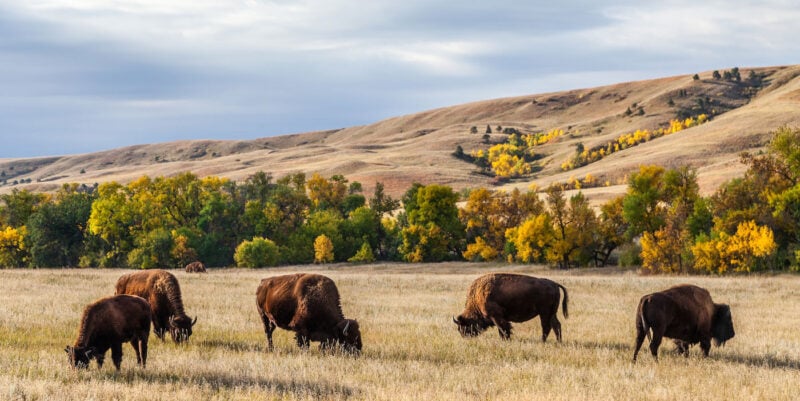
North Dakota’s real estate landscape features a diverse array of neighborhoods that showcase wealth and affluence. From exclusive gated communities to historic districts with meticulously maintained homes, these areas represent the pinnacle of luxury living in the Peace Garden State.
These 30 richest neighborhoods in North Dakota demonstrate significant wealth concentration, with median home values and household incomes substantially higher than state averages.
While some of these affluent areas are situated near major cities like Fargo and Bismarck, others offer upscale rural living with expansive properties and scenic views that attract high-net-worth individuals seeking privacy and space.
Here are the 30 richest neighborhoods in North Dakota:
1. Calio
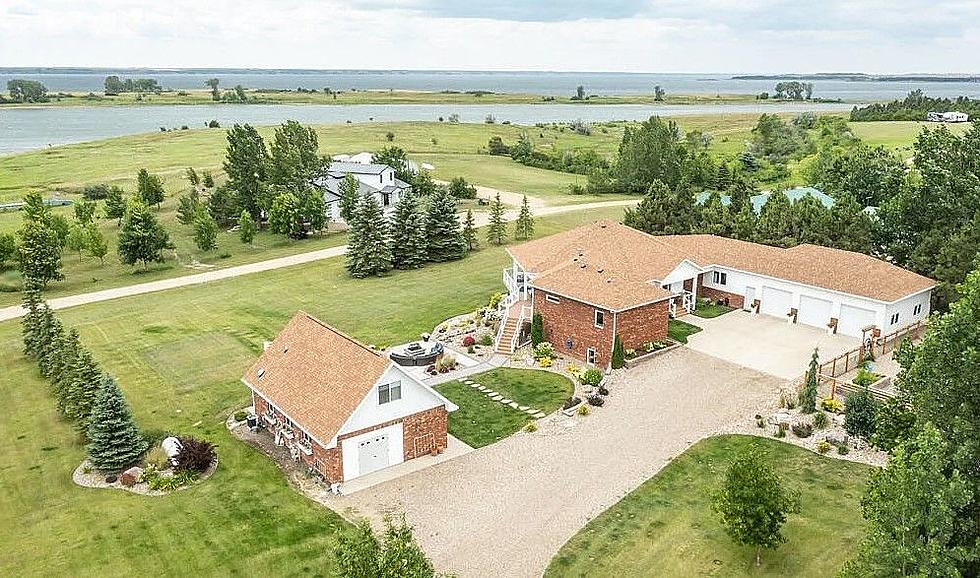
Calio is a small city located in Cavalier County, North Dakota, established in 1905. Once a bustling community, Calio has experienced significant population decline over the decades. According to the 2020 census, the population stood at 8, and estimates in 2023 suggest a further decrease to 5 residents.
Covering an area of approximately 8.91 square miles, with 8.17 square miles of land and 0.74 square miles of water, Calio is entirely rural. The city has a predominantly White population, with 100% identifying as such in recent estimates . The median age is notably high at 62.8 years, indicating an aging population
Economically, Calio presents an interesting profile. The median household income is reported at $159,167, with a per capita income of $146,831. Despite these figures, the city has a 0% poverty rate, suggesting a relatively stable economic situation for its residents. Employment is minimal, with only 3 people employed as of 2023.
Housing in Calio consists of 11 units, with a 54.55% occupancy rate . The average household size is 2.2 people. Transportation is straightforward, with most residents walking to work and an average commute time of just 1.33 minutes .
2. Briarwood

Briarwood is a small, affluent city located in Cass County, North Dakota, directly adjacent to the southern edge of Fargo. Established in 1973, it encompasses approximately 0.14 square miles and had a population of 57 according to the 2020 census
Despite its modest size, Briarwood stands out as the wealthiest city in North Dakota. As of 2023, the median household income is $181,250, with an average household income of $417,683 . The community comprises primarily large, upscale homes, reflecting its economic status.
Demographically, Briarwood is predominantly White, with a median age of 54.1 years, indicating a mature population . The city boasts a high level of educational attainment, with 100% of residents having at least a high school diploma and over 60% holding a bachelor’s degree or higher.
Residents typically commute to Fargo for employment, enjoying an average commute time of 15.4 minutes . Briarwood’s proximity to Fargo provides access to urban amenities while maintaining a tranquil, suburban atmosphere.
Overall, Briarwood offers a blend of exclusivity, affluence, and community, making it a unique enclave within the Fargo metropolitan area.
3. Reile’s Acres
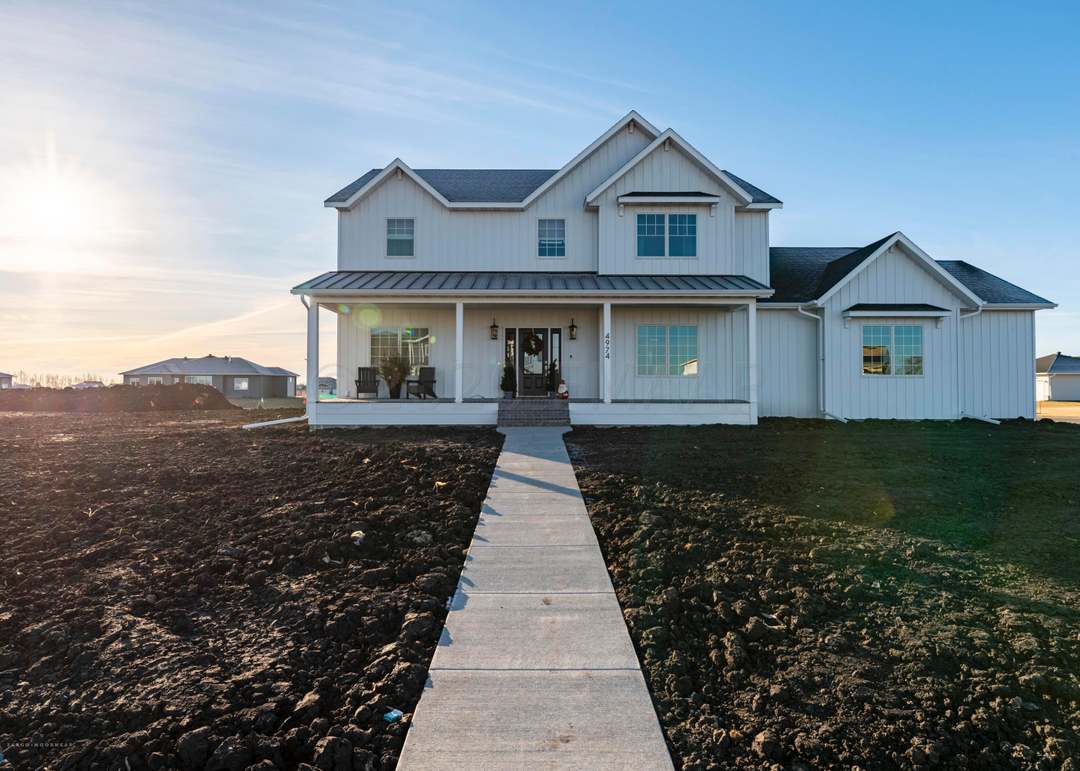
As of the 2020 census, Reile’s Acres had a population of 703, with estimates in 2023 suggesting growth to approximately 841 residents . Covering about 1.1 square miles, the city maintains a rural atmosphere while offering proximity to urban amenities in Fargo.
The community is characterized by its family-friendly environment, with an average household size of 3.5 individuals . Educational attainment is high, with 98% of residents holding at least a high school diploma and 55% possessing a bachelor’s degree or higher . The median household income stands at $198,333, and the poverty rate is notably low at 1%.
Reile’s Acres does not have commercial businesses within its limits, functioning primarily as a “bedroom community” for those working in the Fargo-Moorhead area . The city falls within the West Fargo School District, with options for open enrollment in neighboring districts, all of which provide bus services to residents.
Overall, Reile’s Acres offers a blend of suburban tranquility and accessibility to urban resources, making it an attractive location for families seeking a close-knit community near Fargo.
4. Oxbow
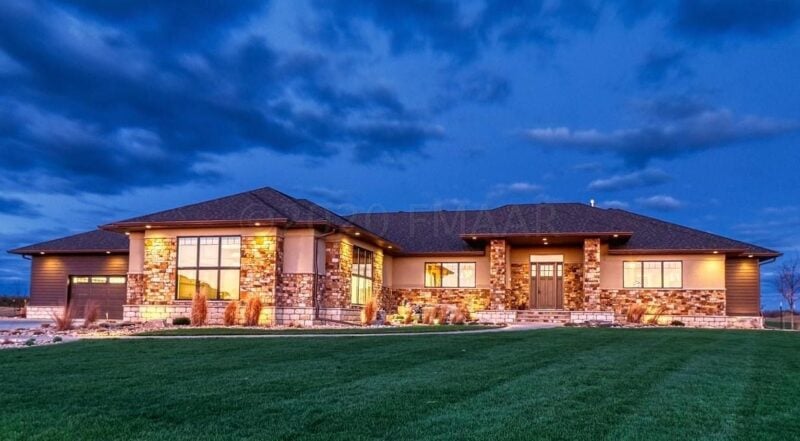
Oxbow is an upscale residential city in Cass County, North Dakota, located approximately 15 miles south of Fargo along the Red River. Incorporated on October 25, 1988, the city was developed around the Oxbow Golf and Country Club, which remains a central feature of the community.
Oxbow is known for its affluence. The median household income is approximately $172,083, and the per capita income is around $79,794. The median home value in the city is estimated at $582,100, reflecting the high standard of living.
Demographically, the city is predominantly White, with a median age of 48.9 years, indicating a mature population. The community boasts a high level of educational attainment, with 99.2% of residents having at least a high school diploma and 56.9% holding a bachelor’s degree or higher.
Oxbow has faced challenges related to flooding, notably during the 2009 flood, which led to significant infrastructure damage. In response, the city has implemented flood protection measures, including the construction of levees and participation in the Fargo-Moorhead Diversion Project.
Overall, Oxbow offers a blend of rural tranquility and suburban convenience, making it an attractive location for families and individuals seeking a high quality of life near Fargo.
5. Brooktree Park
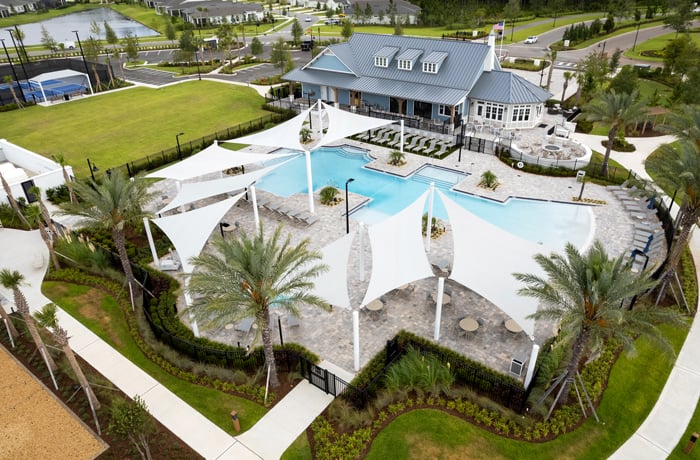
Brooktree Park is a small, unincorporated community and census-designated place located in Cass County, North Dakota. As of the 2020 census, it had a population of just 76 residents.
Nestled along the banks of the Red River, Brooktree Park offers a quiet, rural setting that appeals to individuals and families seeking a peaceful lifestyle close to nature.
Despite its modest size, the area is known for its scenic beauty, with large trees, open green spaces, and easy access to outdoor recreational opportunities such as fishing, walking, and birdwatching.
Brooktree Park maintains a close-knit, neighborly environment, making it an appealing choice for those who value privacy and space without complete isolation. Infrastructure and services are limited due to its unincorporated status, but this contributes to its charm and quiet appeal. With its natural setting and small-community feel, Brooktree Park is a hidden gem in the Fargo metro area.
6. Horace
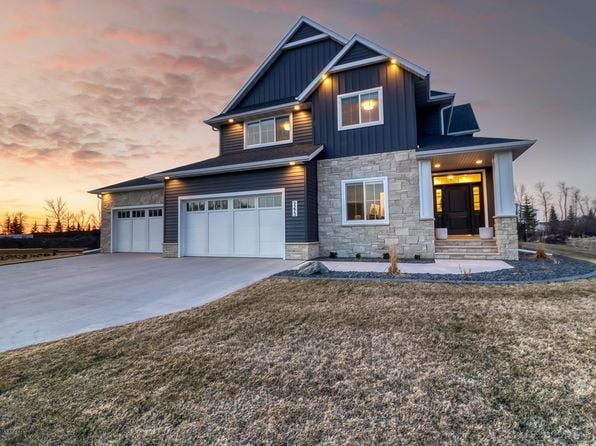
Horace is a thriving suburban city located in Cass County, North Dakota, just a few miles south of West Fargo and Fargo. Originally founded in 1882 and named after newspaper editor Horace Greeley, the city has grown from a quiet rural community into one of the fastest-growing cities in the state. As of 2025, Horace is estimated to have over 7,200 residents, more than doubling its population from just a few years prior.
Economically, Horace is prosperous. Household incomes are well above state averages, and the homeownership rate is exceptionally high. New developments, parks, and infrastructure improvements reflect the city’s rapid growth and long-term planning. One key feature is the Sheyenne Diversion Project, a major flood control initiative that has helped protect the city from seasonal flooding.
Horace also places a strong emphasis on education, with a highly educated population and strong support for local schools. As a result, it has become an increasingly popular destination for families looking to settle in a safe, growing, and vibrant community.
With its blend of small-town character and modern amenities, Horace is quickly becoming one of the most desirable places to live in eastern North Dakota.
7. Argusville
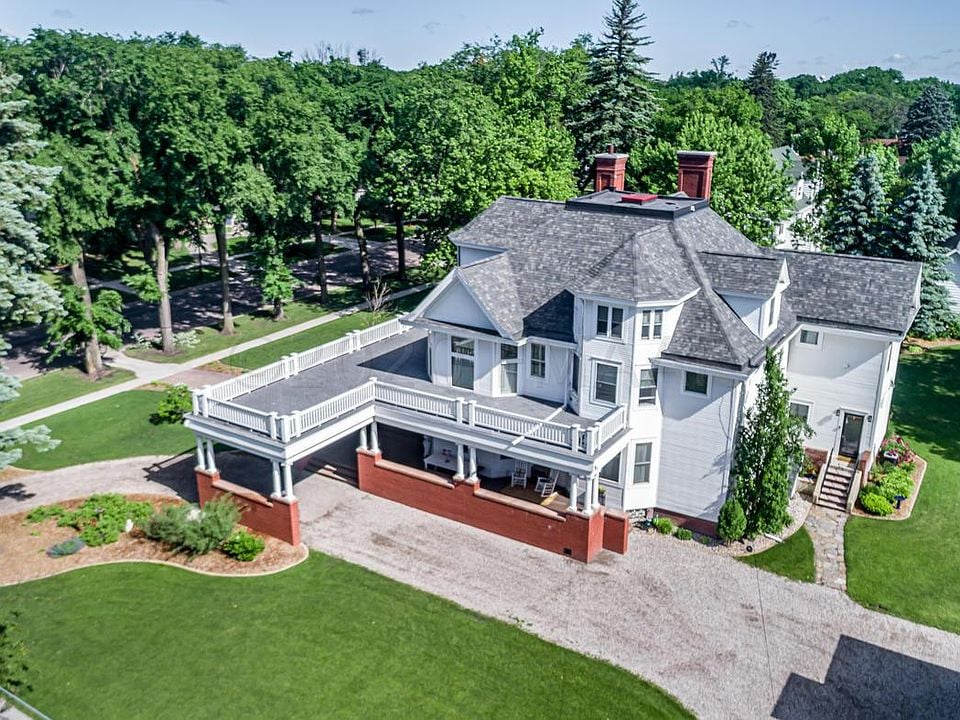
Argusville is a small but growing city located in Cass County, North Dakota, just north of Fargo. With a population of under 500, Argusville offers a quiet, rural lifestyle within easy commuting distance to the Fargo-Moorhead metro area.
The city is known for its spacious residential lots, peaceful neighborhoods, and a strong sense of community. Families are drawn to Argusville for its safety, friendly atmosphere, and access to quality schools in nearby districts.
While it lacks major commercial infrastructure, its proximity to Fargo ensures residents have convenient access to shopping, dining, and employment opportunities.
Agricultural roots still define much of the surrounding area, with wide open fields and farmland creating a scenic backdrop. The city supports a slower pace of life, where neighbors know each other and community events bring residents together.
For those seeking the peace of rural living without sacrificing urban access, Argusville presents an ideal balance. It continues to attract families and professionals looking for a quieter, more spacious alternative to life in the city.
8. Harwood
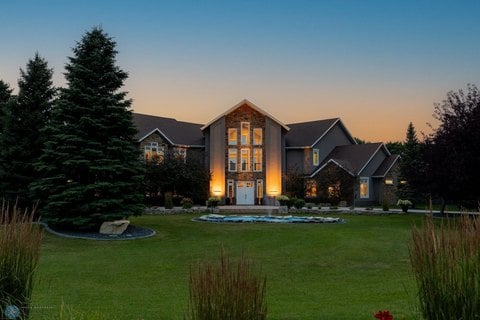
Harwood is a quiet, family-oriented city located just north of Fargo in Cass County, North Dakota. With a population of under 900, it offers residents a peaceful, small-town lifestyle combined with close proximity to the economic and cultural offerings of the Fargo-Moorhead area.
Originally established as a railroad town, Harwood has grown into a comfortable suburban community. The city features spacious residential lots, low crime, and a strong sense of neighborly connection. Many residents commute to Fargo for work, taking advantage of short drive times while returning to the calm of Harwood at the end of the day.
The city values education and is part of reputable school districts that serve the broader metro area. Parks and green spaces add to the appeal, offering recreational opportunities and gathering places for families.
Harwood is an ideal place for those who want a rural-suburban balance quiet streets, friendly neighbors, and open skies, all within a few minutes of major employers, shopping centers, and entertainment options. The community continues to grow steadily, attracting both young families and long-time residents seeking the security and charm of a small North Dakota town.
9. North River
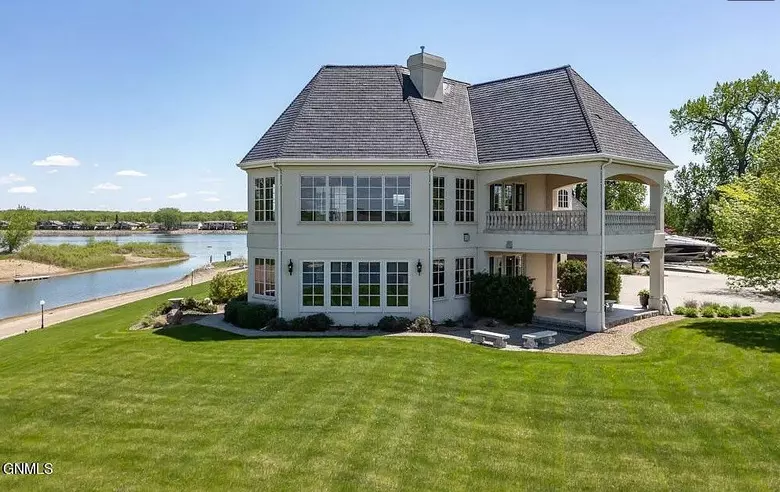
North River is a quiet, residential enclave known for its exclusivity, well-kept homes, and peaceful surroundings. Despite its proximity to the Fargo-Moorhead metro, it offers a rural, almost hidden feel that appeals to those seeking privacy and space.
The city is fully residential with no commercial development, making it ideal for those who want to live in a low-traffic, neighborly environment while enjoying easy access to schools, shopping, and services nearby. Most homes in North River are situated on large lots with mature trees and landscaped yards, contributing to the area’s appeal.
Residents typically commute to Fargo, which is less than 10 minutes away. Families appreciate the quiet streets and access to high-quality school districts. North River is also protected from flooding by nearby levee systems, adding to its sense of stability and security.
For individuals and families who value tranquility, privacy, and a close-knit atmosphere, North River represents a rare blend of rural calm and urban convenience in the Fargo area.
10. Prairie Rose
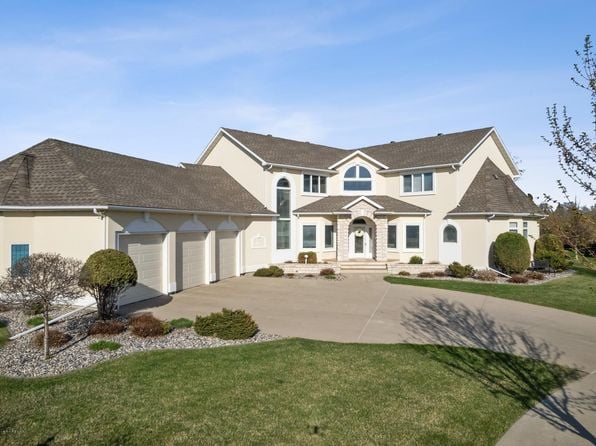
Prairie Rose is a small, residential city located directly south of Fargo in Cass County. With fewer than 100 residents, Prairie Rose is one of the smallest incorporated municipalities in the state, known for its simplicity, quiet character, and close proximity to everything Fargo offers.
The city is made up almost entirely of single-family homes on modest lots. Its residents enjoy a peaceful environment, minimal traffic, and a lifestyle that feels distinctly removed from the hustle and bustle despite being minutes from Fargo’s retail centers, schools, and healthcare facilities.
Prairie Rose does not have commercial zones, parks, or schools within its boundaries, relying instead on the surrounding metro area for services. Still, what it lacks in size, it makes up for in privacy and ease of living. The community is tight-knit, and longtime residents take pride in the quiet, no-frills charm that defines life here.
For those looking to live in a low-profile neighborhood with easy access to one of North Dakota’s most active regions, Prairie Rose is a unique and understated option.
11. Frontier
Frontier is a small residential city nestled just south of Fargo in Cass County. With a population under 200, it functions primarily as a quiet suburb with no commercial districts, allowing residents to enjoy a peaceful neighborhood setting while remaining only minutes from the heart of Fargo.
Founded in the 1970s, Frontier was designed as a planned residential community. It features well-maintained homes, mature trees, and a layout that encourages a sense of community. Its appeal lies in the balance between seclusion and access, residents can retreat into calm surroundings while having every urban amenity within a short drive.
The city is ideal for families and retirees who appreciate safety, space, and predictability. There are no major roads cutting through Frontier, which adds to the area’s quiet nature and walkability. Children attend schools in nearby Fargo districts, and daily commutes are short for most working residents.
Though modest in size, Frontier maintains a strong identity. Local governance and civic engagement help preserve the character of the neighborhood, and residents often cite the stability and friendliness of the area as key reasons they stay.
For those seeking simplicity and serenity right outside Fargo, Frontier remains a desirable and steady place to call home.
12. Logan
Logan is a small, unincorporated rural community located in Ward County, just southeast of Minot. With a population of under 300, Logan offers a serene countryside atmosphere, surrounded by farmland, open fields, and the gentle pace of rural life.
The community is residential in nature, with a mix of long-standing farmsteads and newer homes. Residents enjoy privacy, quiet, and sweeping views of the North Dakota prairie.
Many in Logan work in agriculture or commute to jobs in Minot, balancing traditional rural values with modern conveniences. Children attend public schools in the Minot district, and school buses serve the area.
Life in Logan is centered around family, land, and community. Social life is informal but welcoming, and neighbors often support one another in times of need. For those looking for a slower pace, wide-open space, and a connection to the land, Logan represents the classic rural North Dakota lifestyle with the added benefit of being close to one of the state’s major cities.
13. South Heart
South Heart is a small but proud city in Stark County, located just a few miles west of Dickinson. With a population of around 400, it blends the charm of small-town life with access to jobs and amenities in one of western North Dakota’s busier regions.
Originally established along the Northern Pacific Railway, South Heart has long served as a quiet residential and agricultural hub. Today, it still maintains its rural roots, with a strong sense of community, low crime, and wide open spaces.
South Heart is served by its own school district, making it a popular choice for families who want a close-knit learning environment for their children. Churches, small businesses, and local events help bind the community together.
Though limited in size, South Heart’s location is a strength it offers a slower, more grounded pace of life while still benefiting from the economic opportunities driven by the energy and agriculture sectors in nearby Dickinson. For those looking for a tight community with deep roots and practical access to a regional hub, South Heart delivers both peace and proximity.
14. Harmon
Harmon is a quiet census-designated community in Morton County, just southwest of Mandan. With a population under 300, Harmon offers a semi-rural lifestyle that appeals to those seeking space, stillness, and simplicity.
The area is made up primarily of residential homes and small acreages, giving families and individuals plenty of breathing room while still remaining a short drive from employment and services in Mandan or Bismarck. Commuters appreciate the easy access to city amenities without sacrificing the tranquility of country living.
Harmon does not have its own commercial or civic infrastructure but benefits from being under Morton County’s jurisdiction. Residents enjoy a high quality of life, low crime, and a strong connection to the surrounding landscape.
Most families rely on nearby school districts, and students typically commute to Mandan for education. Harmon also appeals to retirees, hobby farmers, and remote workers who want proximity to a metro area while living in a more relaxed environment.
For those seeking a slower pace, community privacy, and open skies yet still want to stay connected to city life Harmon offers a practical and peaceful in-between.
15. Dwight
Dwight is a small city in Richland County, located in the southeastern part of North Dakota near the Minnesota border. With a population of fewer than 100 residents, Dwight offers a peaceful, rural lifestyle surrounded by farmland and open prairie.
Dwight is entirely residential and very low-density, with wide streets, modest homes, and a deeply rooted sense of community. Most residents commute to nearby Wahpeton or Breckenridge, Minnesota, for work, shopping, and school access.
The city does not have its own commercial district or school system, but residents enjoy a simple lifestyle, low taxes, and the safety that comes with a small population. For those who appreciate deep local history, wide open space, and quiet living, Dwight is a town that embodies the heart of rural North Dakota.
16. Bucyrus
Bucyrus is one of the smallest cities in North Dakota, located in Adams County in the southwestern region of the state. With a population of just a handful of residents, Bucyrus is a place defined by its resilience, history, and connection to the land.
Founded in the early 1900s as a railway stop, Bucyrus once had a thriving population and a busy main street. Over time, like many rural towns, it experienced decline due to changes in transportation, agriculture, and the economy.
Today, Bucyrus remains a symbol of rural endurance. It is extremely quiet, home to a few residents who value solitude, self-reliance, and simplicity. Though lacking commercial activity and city services, the town is surrounded by farmland and prairie, offering stunning views and a raw connection to nature.
Life in Bucyrus is for those who truly embrace solitude and the rural lifestyle. It’s not for everyone, but for those who stay, it represents freedom, open space, and the deep roots of North Dakota’s homesteading past.
17. West Fargo
West Fargo is one of the fastest-growing cities in North Dakota, located in Cass County and forming part of the greater Fargo metropolitan area. With a population exceeding 40,000, it has evolved from a modest railroad town into a dynamic, modern suburb with a strong economy, excellent schools, and a high quality of life.
West Fargo blends suburban convenience with a family-friendly atmosphere. The city is known for its well-planned neighborhoods, thriving local businesses, and strong community involvement. Residents enjoy access to parks, recreational facilities, and cultural events throughout the year.
The school system is one of the area’s most respected, drawing families from across the region. Public services, infrastructure, and amenities have kept pace with the city’s rapid population growth, ensuring that residents benefit from both expansion and thoughtful planning.
Economically, West Fargo is closely tied to Fargo, with many residents commuting into the city. However, it has developed its own business and industrial sectors, supporting a range of local employment opportunities.
18. Thompson
Thompson is a small, welcoming city located in Grand Forks County, approximately 15 miles south of the city of Grand Forks. With a population around 1,000, Thompson offers the charm and simplicity of small-town life while providing quick access to urban amenities.
The city is known for its strong community values, excellent school system, and well-kept neighborhoods. Families appreciate the calm pace of life, safety, and the sense of involvement that comes with living in a place where neighbors know one another.
Thompson has modest commercial activity, with local businesses supporting day-to-day needs. Most residents commute to Grand Forks for employment, making the city an attractive location for those who want a quiet home base within reach of a larger job market.
The surrounding area includes farmland, rolling fields, and access to outdoor activities. For those looking for a peaceful, tight-knit environment with an easy connection to a larger city, Thompson offers a balanced and grounded lifestyle in the heart of the Red River Valley.
19. Mapleton
Mapleton is a steadily growing city located just west of Fargo in Cass County. With a population of over 1,300, it serves as a popular bedroom community for those working in the Fargo-Moorhead metro area but desiring more space, quiet, and a small-town environment.
Originally established in the late 1800s as a railroad town, Mapleton has evolved into a modern residential hub, known for its newer housing developments, community parks, and family-friendly atmosphere. It offers a peaceful, semi-rural feel, with spacious lots and open fields surrounding residential neighborhoods.
Mapleton has seen an influx of young families in recent years, and local infrastructure has expanded to meet this demand. While commercial services are limited within city limits, all major amenities are within a 10–15 minute drive.
The city is part of the West Fargo School District, and school bus service makes commuting easy for students. Community events and holiday celebrations help foster connection among residents, and the sense of safety and stability makes it an attractive place to raise children.
20. Arnegard
Arnegard is a small city located in McKenzie County in western North Dakota. With a population of just over 100 residents, it offers a quiet, rural lifestyle amidst the wide-open landscapes of the state’s energy-rich region.
The local economy has benefited from energy development, and while the town remains modest in size, its role as a home base for oilfield workers and families has given it a sense of purpose and resilience.
The city features a few residential streets, a community center, and small local businesses. Residents value the peaceful atmosphere, close community ties, and easy access to both work and recreation.
Though services and entertainment options are limited, the town is within driving distance of Watford City, which provides schools, healthcare, and other needs. For those drawn to rural independence and the energy economy, Arnegard is a quiet yet significant part of the region.
21. Surrey
Surrey is a small but growing city located in Ward County, about seven miles east of Minot. With a population of around 1,400, Surrey is known for its family-friendly environment, accessible location, and blend of small-town charm with suburban convenience.
Founded in the early 1900s as a Great Northern Railway stop, Surrey has developed into a close-knit residential community. The city offers well-kept neighborhoods, several parks, and a local school that serves grades K–12, making it an attractive location for young families.
Many residents commute to Minot for work, school, and entertainment, but enjoy coming home to a quieter, slower-paced environment. The city’s proximity to Minot allows for access to healthcare, shopping, and regional events, while still offering a lower cost of living and more spacious housing options.
Community pride runs deep in Surrey, and local events, sports, and school functions bring people together. The city continues to see steady development, with new homes being built and civic infrastructure keeping pace.
22. Gardner
Gardner is a small, rural city in northern Cass County, about 25 miles north of Fargo. With a population under 100, Gardner is the kind of quiet, close-knit community where neighbors truly know each other and life moves at a relaxed pace.
Founded in the late 1800s, Gardner was once a stop along the railroad and a hub for area farmers. Today, it maintains a peaceful charm and a strong connection to the surrounding agricultural economy. Most residents either farm or commute to Fargo and nearby towns for work and services.
Gardner features wide-open landscapes, modest homes, and a deep-rooted community spirit. Though the city itself has few businesses or amenities, its proximity to Fargo allows for convenient access to everything from healthcare to shopping to education.
23. Kindred
Kindred is a small, vibrant city located in southeastern Cass County, about 25 miles southwest of Fargo. With a population nearing 1,000, Kindred blends small-town warmth with proximity to one of North Dakota’s largest urban centers.
The community is especially appealing to families, thanks to its well-regarded K–12 public school system, strong local values, and supportive atmosphere. Residents often choose Kindred for its peaceful pace of life, low crime, and the opportunity to raise children in a safe, welcoming environment.
Originally a farming hub, Kindred has retained its agricultural roots while embracing growth. New housing developments, community events, and local businesses contribute to a steady, optimistic sense of progress. Most residents commute to Fargo for work but return home to a town that still moves with the rhythm of the land.
With tree-lined streets, walkable neighborhoods, and a strong sense of pride, Kindred offers a grounded lifestyle. Whether you’re attending a school football game or enjoying a quiet night under the prairie stars, life in Kindred feels connected, both to people and to place.
24. Alexander
Alexander is a small city in McKenzie County, located in the heart of North Dakota’s oil-rich western region. With a population just over 200, Alexander has seen periods of boom and transition due to its position near the Bakken oil fields.
The city serves as a base for oilfield workers, truckers, and families connected to the energy sector. Though small, Alexander has a school, a handful of local businesses, and essential services that support the needs of its residents.
It has a rugged, independent character shaped by both its geography and its economic importance.
Surrounded by open land and natural beauty, Alexander appeals to those who don’t mind wide skies and windy days. It’s common to see trucks lining the streets and industry-related activity around town, but beyond that, there’s a quiet rhythm to daily life.
25. Watford City
Watford City is the county seat of McKenzie County and one of the most rapidly transformed cities in North Dakota due to the oil boom. Once a quiet rural town, it has grown significantly in the past two decades, with a population now exceeding 7,000.
Watford City has evolved into a regional hub for commerce, healthcare, and energy, driven largely by the Bakken oil formation. The city features modern schools, medical facilities, new housing developments, and recreational amenities like parks, gyms, and a well-appointed community center.
Despite the rapid growth, Watford City has worked to preserve its small-town spirit. Families are supported by a strong school system and a city government focused on managing growth in a sustainable way. Infrastructure has improved dramatically, and new businesses continue to invest in the area.
26. Apple Valley
Apple Valley is a small, unincorporated residential community located in Burleigh County, just outside Bismarck. With fewer than 200 residents, Apple Valley serves as a quiet, semi-rural suburb for people who work in the capital city but prefer a more peaceful, spacious living environment.
The area consists mostly of single-family homes on large lots. Many properties offer privacy, scenic views, and a sense of retreat from busier neighborhoods. Residents value the balance Apple Valley offers: the benefits of living near major employers, schools, and shopping centers, without the noise and density of the city.
Community life is informal but friendly. There are no commercial centers or schools within Apple Valley itself, so families typically rely on Bismarck for education and services.
The lifestyle here is relaxed and grounded. With open skies, quiet streets, and easy access to both the city and the countryside, Apple Valley attracts those looking for a slower, more intentional pace of life while still remaining plugged into Bismarck’s economy and culture.
27. Stanley
Stanley is a city in Mountrail County and serves as the county seat. Located in northwestern North Dakota, Stanley has grown significantly due to its strategic location near the Bakken oil fields. With a population around 2,500, the city balances energy industry activity with the enduring character of a traditional rural town.
Stanley offers a wide range of services for its size, including a hospital, schools, local businesses, and recreational opportunities. Residents enjoy parks, sports programs, and a small but growing downtown area.
The pace of life in Stanley is practical and work-oriented, but still neighborly and community-driven. Families and workers alike appreciate the city’s efforts to invest in infrastructure, housing, and civic amenities while navigating the pressures of a changing economy.
Surrounded by open prairie and farmland, Stanley retains its small-town identity even as it evolves. It’s a place where opportunity and tradition coexist.
28. Burlington
Burlington is a small but historically significant city in Ward County, situated at the confluence of the Des Lacs and Mouse Rivers. Just west of Minot, Burlington is part of the Minot metro area and offers a quiet residential environment with deep local roots. Its population is around 1,300.
Founded in 1883, Burlington is one of the oldest settlements in the region. It combines historic charm with modern convenience, offering access to schools, parks, and local businesses while benefiting from its proximity to larger city services.
The community is close-knit, and its schools, churches, and events foster a strong sense of local pride. Outdoor recreation is a highlight, with nearby rivers and trails offering opportunities for fishing, hiking, and nature watching.
Burlington is ideal for those seeking a stable, slower-paced lifestyle with room to grow, while still remaining connected to the broader regional economy.
29. Dickey
Dickey is a very small town located in LaMoure County in southeastern North Dakota. With a population of fewer than 50 residents, Dickey exemplifies the simplicity and quiet that define many of the state’s most rural communities.
Surrounded by rich farmland, Dickey is rooted in agriculture. The landscape is wide and open, and life moves at a slow, deliberate pace. Most residents are long-time locals or families who appreciate the solitude and familiarity of small-town living.
There are no schools or commercial centers in town, so residents rely on nearby communities for services. Still, what Dickey lacks in size, it makes up for in stillness and self-reliance.
The town is defined by its wide streets, a few scattered homes, and the unshakable rhythm of rural life. For those who want true quiet and a deep connection to the land, Dickey offers a way of life that has nearly vanished elsewhere, but still persists here, undisturbed.
30. Bismarck
Bismarck, the capital of North Dakota and the seat of Burleigh County, is situated on the eastern bank of the Missouri River. Founded in 1872 as Edwinton, it was renamed in 1873 to honor German Chancellor Otto von Bismarck, aiming to attract German investment.
The city became the capital of the Dakota Territory in 1883 and retained its status when North Dakota achieved statehood in 1889. As of 2023, Bismarck’s population is approximately 74,146, making it the state’s second-most populous city after Fargo.
The city boasts a diverse economy with major employers in government, healthcare, and education, including Sanford Health and Bismarck State College. Cultural attractions include the North Dakota State Capitol, the North Dakota Heritage Center & State Museum, and the Belle Mehus Auditorium.
The city experiences a humid continental climate, characterized by cold winters and warm summers. Bismarck’s blend of historical significance, economic vitality, and natural beauty makes it a vibrant community in the Upper Midwest
Economic Factors Shaping North Dakota’s Wealthiest Neighborhoods
North Dakota’s affluent neighborhoods have been significantly influenced by the state’s evolving economic landscape, particularly through industry diversification and strategic real estate investments.
Key Industries and Employment Trends
The oil boom in western North Dakota has created substantial wealth, particularly in cities like Williston and Watford City. Since 2008, the petroleum industry has generated numerous high-paying jobs with average annual salaries exceeding $100,000 for specialized positions.
Healthcare and technology sectors have emerged as major contributors to wealth creation in eastern neighborhoods, especially around Fargo and Grand Forks. Mayo Clinic’s expanded presence and Microsoft’s operations have introduced executive-level positions with compensation packages ranging from $150,000 to $250,000 annually.
Agricultural technology has transformed traditional farming communities into centers of innovation. Modern precision agriculture enterprises have increased average farm revenue by 35% in communities like Casselton and Jamestown over the past decade.
Defense contracts associated with Grand Forks Air Force Base provide stable, high-income employment that supports luxury housing developments in surrounding areas.
Real Estate Values and Market Growth
Property values in North Dakota’s wealthiest neighborhoods have demonstrated remarkable resilience, with average appreciation rates of 4.7% annually since 2020. This outpaces the national average by nearly 1.2%.
Exclusive developments around Bismarck’s Missouri River showcase properties ranging from $750,000 to $2.5 million, representing a 40% increase in luxury inventory since 2018. These neighborhoods feature extensive waterfront access and custom-built estates.
The limited housing supply in established wealthy enclaves like Northport in Fargo has created significant market pressure. The average home remains on market for just 12 days compared to 45 days in standard neighborhoods.
Investment in commercial development has complemented residential growth, with mixed-use projects in Minot and West Fargo attracting high-net-worth individuals seeking proximity to upscale amenities.
Demographic and Lifestyle Insights
North Dakota’s wealthiest neighborhoods exhibit distinctive population characteristics and offer residents access to exclusive amenities that contribute to their desirability. These communities typically feature higher education levels and household incomes compared to state averages.
Population Characteristics
North Dakota’s affluent neighborhoods demonstrate notable demographic patterns that set them apart from the rest of the state. Residents in these areas typically hold advanced degrees, with approximately 68% possessing at least a bachelor’s degree compared to the state average of 30.7%.
The median age in these upscale communities tends to be between 42-48 years, reflecting established professionals and executives in their peak earning years. Family sizes are smaller than the state average, with 2.1 persons per household versus 2.3 statewide.
These neighborhoods show greater ethnic homogeneity, with approximately 90% white residents compared to North Dakota’s overall 84%. However, professionals in healthcare, energy, and technology sectors have gradually increased diversity in recent years.
Cultural and Recreational Amenities
Wealthy North Dakota neighborhoods boast exclusive recreational facilities and cultural attractions that enhance resident lifestyle quality. Private golf courses like the Fargo Country Club and Grand Forks Country Club serve as social hubs with membership fees ranging from $5,000 to $25,000 annually.
Upscale shopping districts feature boutique retailers and gourmet dining options. The Village West development in Bismarck and Broadway Square in Fargo provide luxury shopping experiences with high-end brands uncommon elsewhere in the state.
Cultural amenities include proximity to museums, theaters, and concert venues. The Plains Art Museum in Fargo and the North Dakota Heritage Center in Bismarck frequently host exclusive member events for local patrons.
Recreational activities cater to affluent tastes with equestrian centers, private tennis clubs, and marina access for those living near water bodies like Lake Sakakawea and Devils Lake.





